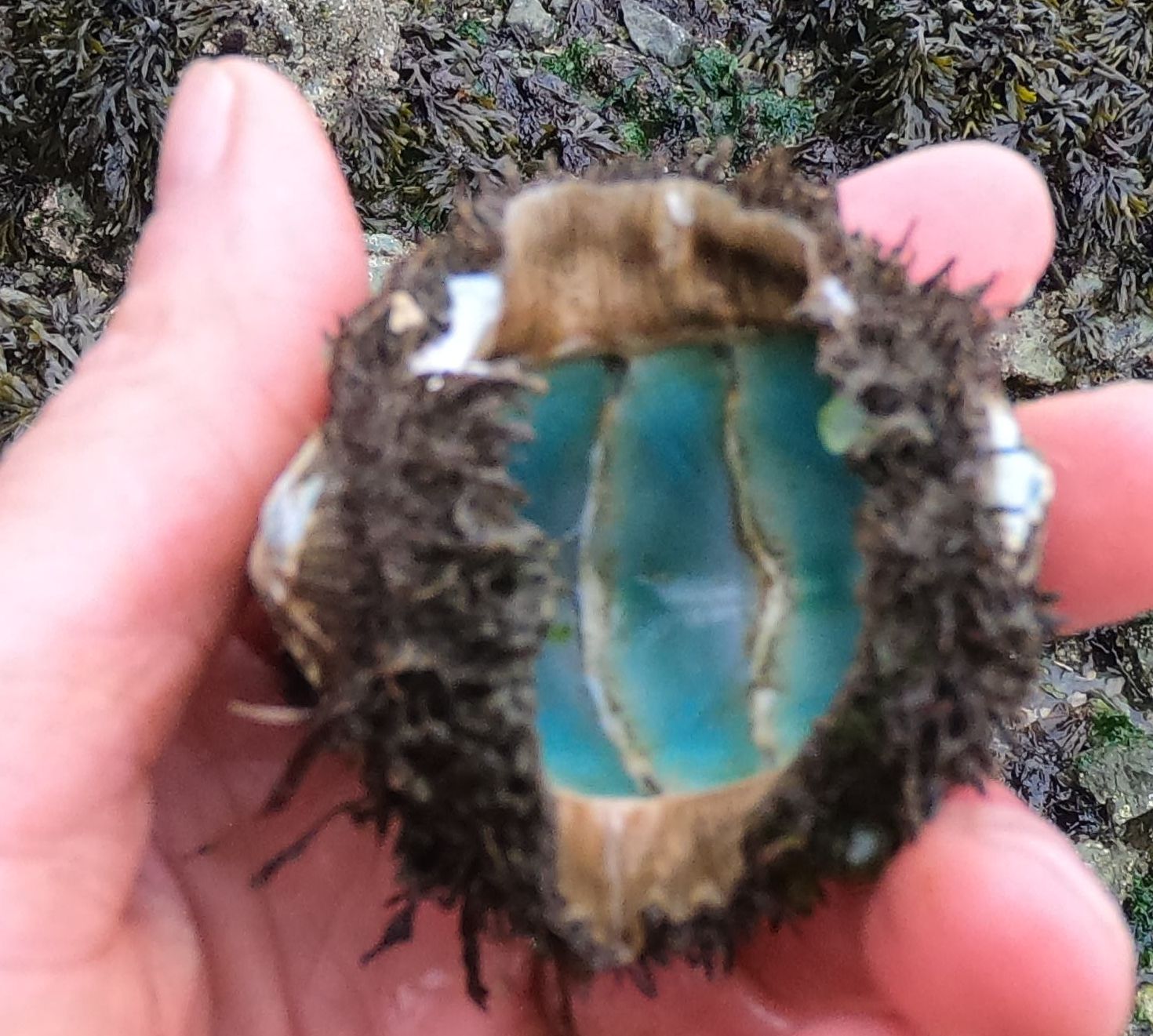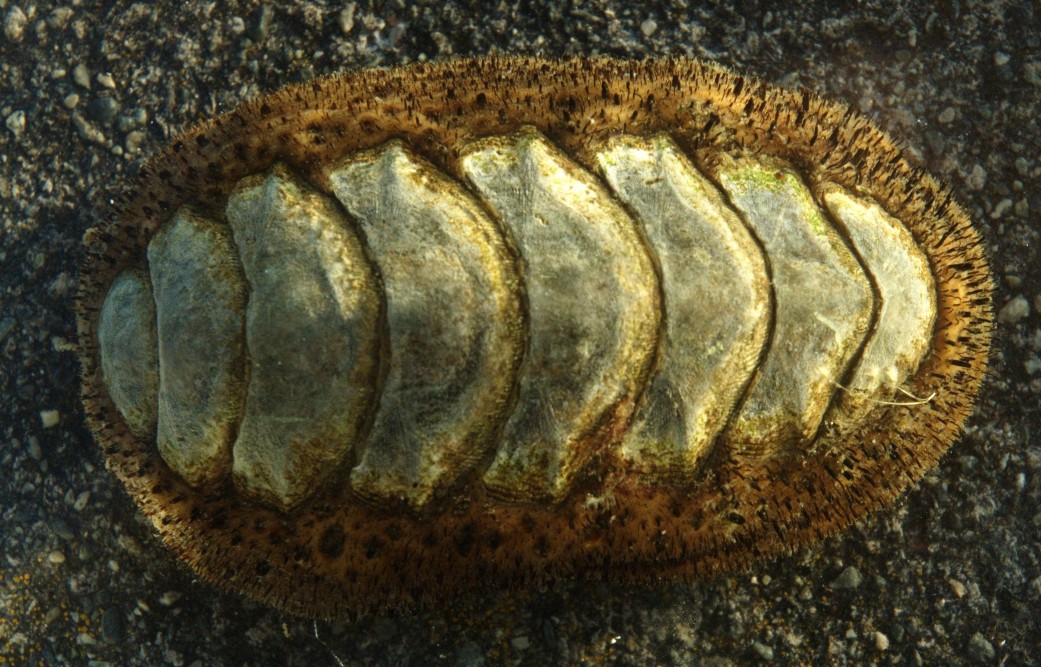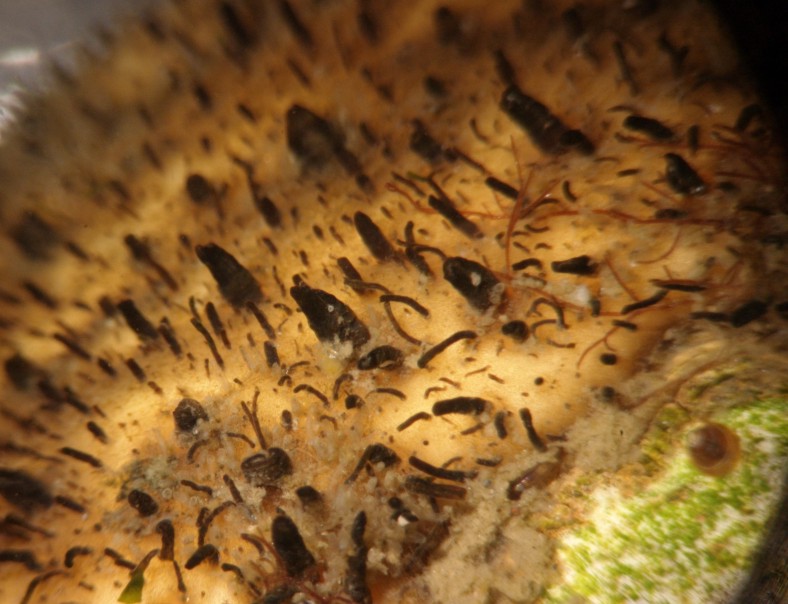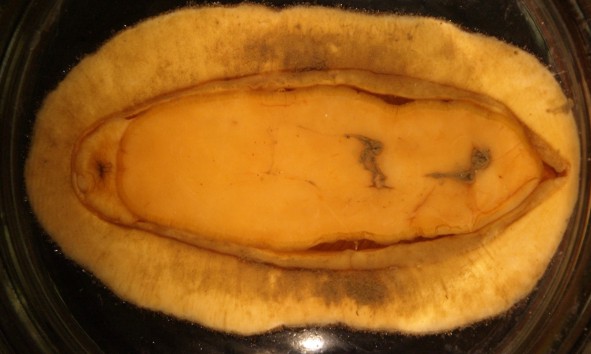Mopalia muscosa (Gould, 1846)Common name(s): Mossy chiton |
|
| Synonyms: |  |
| Phylum
Mollusca
Class Polyplacophora Order Neoloricata Suborder Lepidopleurina Family Mopaliidae |
|
| Mopalia muscosa under a rock at San Simeon, CA. Length is about 3 cm. Head and plate 1 are to the left. | |
| (Photo by: Dave Cowles, 1995) | |
How to Distinguish from Similar Species: The other Mopalia species with hairs on the girdle, such as Mopalia lignosa, have thinner, flexible hairs.
Geographical Range: Queen Charlotte Islands, Canada to Isla Cedros, Baja California
Depth Range: Middle and low intertidal
Habitat: On rocks, especially in areas of low to moderate surf. Also found in estuaries.
Biology/Natural History: Moves at night at high tides. This species homes to a special place on the rock after each trip. Home ranges of different individuals usually do not overlap. Permanently submerged individuals in tidepools may not home. Feeds primarily on the red alga Mastocarpus papillata and Endocladia muricata, green alga Cladophora. Larvae will settle on rocks or shells covered with an algal film.
| Return to: | |||
| Main Page | Alphabetic Index | Systematic Index | Glossary |
References:
Dichotomous Keys:Kozloff 1987, 1996
Smith and Carlton, 1975
Flora and Fairbanks, 1966
General References:
Morris
et al., 1980
Kozloff,
1993
Niesen,
1994
Scientific Articles:
General Notes and Observations: Locations, abundances, unusual behaviors:

This individual was on the rocky head on the south side of Bowman
Bay.
Photo by Dave Cowles, July 2008

This 10 cm individual was between several boulders on Sares Head, April 2011. Photo by Dave Cowles
 The
internal surfaces of the plates are blue, at least as seen in this
recently-deceased individual. Photo by Dave Cowles, summer 2020
The
internal surfaces of the plates are blue, at least as seen in this
recently-deceased individual. Photo by Dave Cowles, summer 2020
This venerable old chiton, just over 8 cm long, was also found at Sares Head. The head is to the right. The plates are so worn that the pattern can hardly be seen. The mantle color is unusual for this species but the mantle hairs are stiff and strap-like and both the Kozloff key and Aaron Baldwin's key identify it as Mopalia muscosa. The mantle and plates of this individual are also a whole city of symbionts, from several species of polychaete worms, small copepods, a tiny limpet (visible above at the top of plate 2), unidentified stalked invertebrates, and even a chironomid (midge fly) larva! I know that insects are rarely found in the ocean but the midge larva was clearly at home--crawling among other invertebrates and across the plates, nestling down in the edge of the mantle at the margin of the plates, etc., even though the chiton was fully immersed in seawater.
This closeup of the mantle of the individual above shows the strange yellowish background color of the mantle combined with the familiar thick, strap-like hairs characteristic of this species. The limpet is visible on the edge of the algae-encrusted plate at the bottom right, and a mucus tube of a polychaete worm is visible at the margin between the plate and the mantle. A few strands of red algae intertwine among the mantle hairs.
Here is a view of the underside of the above individual. The mouth is clearly visible on the left. The large central region is the foot, which has several strands of mucus on it. The ring around the foot is the mantle cavity, which contains the gills. The outer ring of tissue is the underside of the mantle (girdle), which is held down fairly tightly against the substrate.
Authors and Editors of Page:
Dave Cowles (2005): Created original page


